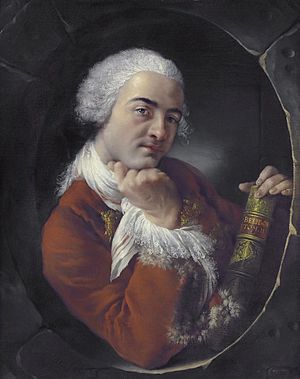Bernard Forest de Bélidor facts for kids
Bernard Forest de Bélidor (born 1698 in Catalonia, Spain – died 8 September 1761 in Paris, France) was a very important French engineer. He made big contributions to the sciences of hydraulics (how water moves) and ballistics (how projectiles like cannonballs fly).
Bernard Forest de Bélidor became an orphan when he was only five months old. His godfather, an artillery officer named de Fossiébourg, and his family raised him. When he was young, Bélidor joined the army.
After leaving the army, he became very interested in science and engineering. He then became a professor of artillery. This was at a special school in Fère-en-Tardenois, Aisne. For a while, he even worked on measuring the arc of the Earth.
In the years that followed, Bélidor published several very important books. These books covered many different topics. They included hydraulics, mathematics, and both civil engineering (like building bridges) and military engineering (like building forts).
His most famous book is L'architecture hydraulique. This book was published in four parts between 1737 and 1753. It was special because it was the first time that integral calculus was used to solve real-world engineering problems. Integral calculus is a type of advanced math.
Bélidor also taught Abram Petrovich Gannibal. Gannibal was a famous student of Peter the Great. In November 1726, Bélidor was chosen to be a Fellow of the Royal Society. This is a very respected group of scientists. He married a relative of his godfather, de Fossiébourg.
Important Books
Bernard Forest de Bélidor wrote many influential books. Here are some of his most well-known works:
- Nouveau cours de mathématiques, published in 1725. This book was the first to use the term sinusoid. A sinusoid is a type of wave shape.
- La science des ingénieurs dans la conduite des travaux de fortification et d'architecture civile, published in 1729. This book taught engineers how to build strong forts and other structures.
- Le bombardier français, ou, nouvelle méthode pour jeter des bombes avec précision. Tables, published in 1731. This book explained new ways to aim and fire bombs accurately.
- L'architecture hydraulique, ou l'art de conduire, d'élever et de ménager les eaux pour les différents besoins de la vie, published from 1737 to 1753. This was his most famous work. It covered how to manage water for different needs.
- Dictionnaire portatif de l'ingénieur, published in 1758. This was a handy dictionary for engineers.


